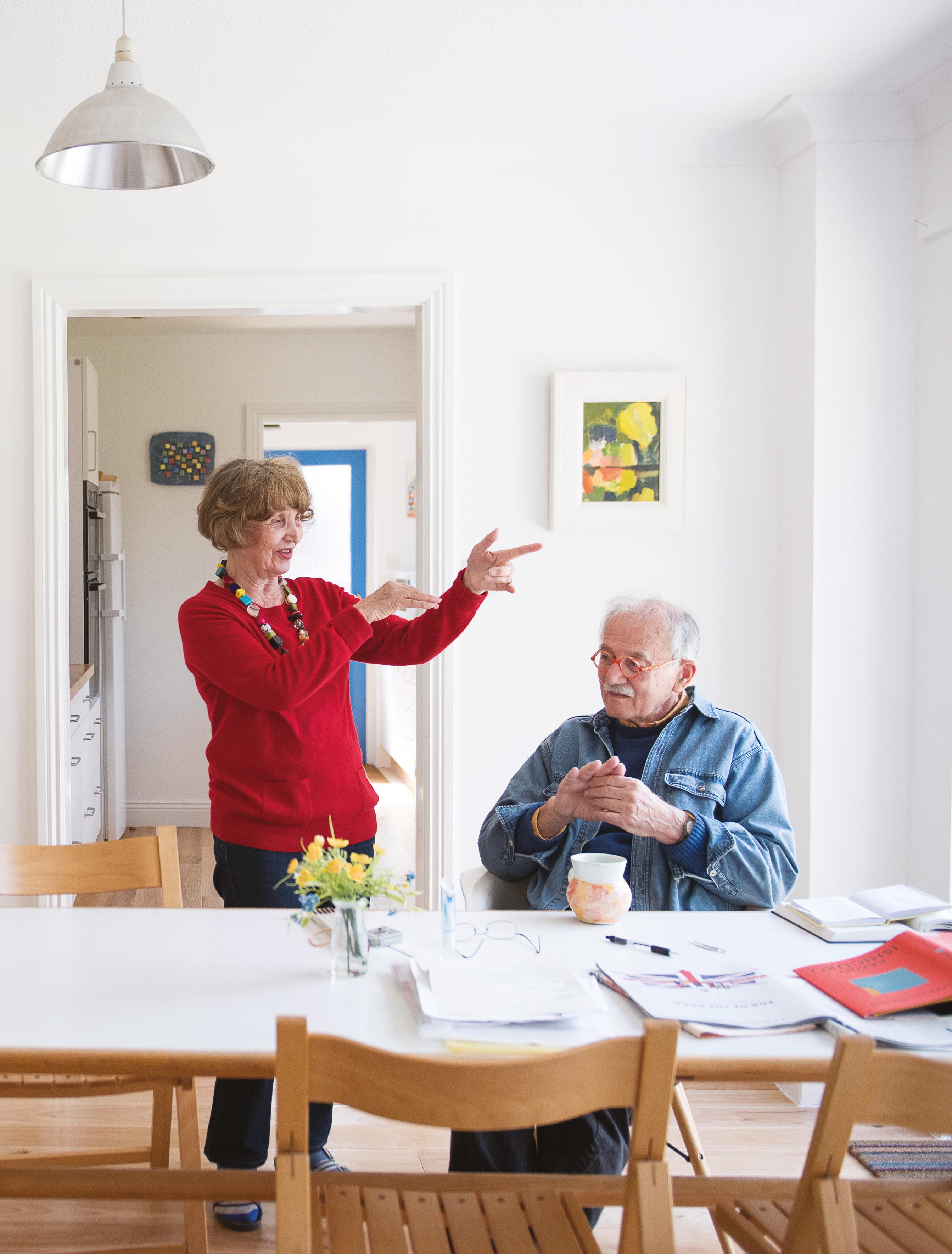
8 minute read
NORRIE DE MONTIGNY
Words Jo Denbury Photography Katharine Davies
Iarrive at the home of ceramicist Norrie de Montigny and am waved cheerfully onto the drive by his wife Jane. The couple have recently moved to Sherborne from Duntish where Norrie had long been opening his studio to the public as part of Dorset Art Weeks. 2021 sees the welcome return of this lauded event with Norrie making an exciting new addition to Sherborne’s growing community of artists.
Advertisement
We enjoy a coffee in the garden before heading into Norrie’s new studio. It’s a most orderly place – freshly painted white walls and neat shelves stacked with labelled pots, powders, tiles and research material.
From within this tidy space pop Norrie’s vibrant candy-like ceramic reliefs. Their levity of colour and technique striking. The purity of line, lightness of touch and abstract patterns in his work offer a disruptive, playful alternative to the medium of paint or print. >

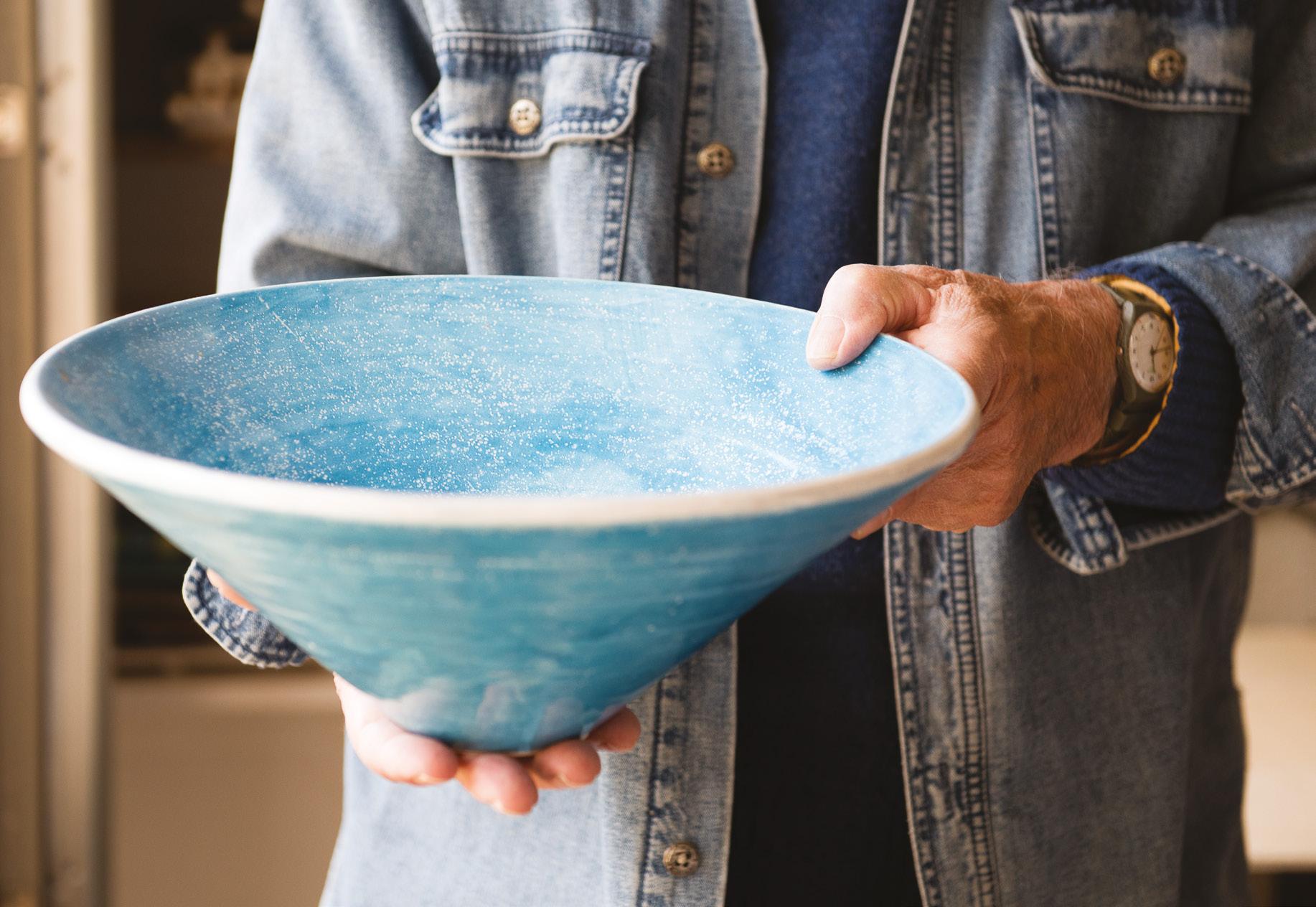
‘Dorset Art Weeks is good fun for the simple reason that I am usually working on my own and have very little contact with other people’, says Norrie perched on a stool at his workbench. ‘It’s a lonely existence really, though I cope very well with it and I have so many things that I want to do. I am pretty absorbed by my work.’
It hasn’t always been like this and Norrie hasn’t always been a potter. He came to it in his early 30s. ‘I became involved in 1974,’ he says ‘it was through lucky conditions. In fact, I wanted to do photography at first.’ Norrie grew up in Luxembourg during the Second World War and remained there in the years that followed. ‘From the ages of 21 to 32, I worked in a commercial company in Luxembourg,’ he explains ‘It was a very successful company, and I did very well. But after 12 years, I got bored. At 33 I couldn’t see my whole life going on this way, so I took the year off and went to Spain.’
In 1973 Norrie’s life took an unexpected and serendipitous turn. At the time, he was living in Nerja, a town in Andalucia. ‘As it happened, Jane had just arrived in the region with a friend and was waiting at a bus stop to get to the next village.’ He recalls, ‘On realising there were no buses on a Sunday they had just started to hitchhike when I drove by. I offered them a lift and the rest is history’.
Norrie eventually went to live in London and was pondering a future as a photographer as well as exploring the idea of becoming an architect. He had always had an interest in the subject and at that time, Jane lived close to the Architectural Association. This pursuit however, was short-lived… ‘Jane had enrolled in evening ceramics classes and she took me along,’ he explains ‘and, suddenly, I was doing four evenings a week. I learned very quickly and felt comfortable with it.’ He muses, ‘If you compare clay and architecture – the latter takes years before you see the result whereas with ceramics, you can see the result in a fortnight. In architecture, if you have a terrible building it doesn’t go away – you can put a tree in front of it, but it doesn’t go away.’ The immediacy and modesty of ceramics appealed to Norrie and with that withered thoughts of photography and architecture.
It was now a matter of how to become a ceramicist. Norrie recalls, ‘I could have done a course at University which would’ve probably relied more on the art side over technical elements. So, instead, Jane and I got a little booklet from the Potters Association on Marchmont Street; it had a list of around 100 practicing potters. We took the booklet jumped in the car and visited them all – it took three weeks!’ Eventually, Alan Wallwork, a potter based in Marnhull accepted Norrie. ‘He thankfully offered me a job, helping to pack the kiln and so on. So, we moved to Marnhull.’ Jane already had family roots in Dorset so moving here wasn’t too much of a culture shock.
Norrie was also very interested at that time in the work of Michael Cardew in Cornwall and Ray Finch at Winchcombe in Gloucestershire. Both of these potters had been heavily influenced by Bernard Leach, one of the grandfathers of British pottery. As luck would have it, during this period Ray Finch offered him a 6-week placement and Norrie ended up staying there for 5 years. ‘When I left, I could do everything that anybody else could do there. I had learned to make pots to a very technical standard – the Winchcombe way.’
Norrie began his own journey as a potter, playing with shape and colour in a bid to develop his own style. One day, a friend visiting Norrie’s studio, liked one of his experimental pieces so much he offered to buy it – a colour test glaze on a flat piece of fired clay. ‘Take it, I said. Later when I visited his home, I noticed he had the piece hanging as a relief ceramic on his wall. That got me thinking. I started moving very slowly from domestic ware to working on these slabs.’
Over time, Norrie has developed an intimate knowledge of glazes which he uses like paint on the slabs. He uses many different glaze formulas (his brother, perhaps unsurprisingly, was a research chemist) and his work is intriguingly innovative. ‘But with it comes enormous problems,’ says Norrie ‘because to paint on ceramic, is like taking a brush onto the beach and painting on sand. At the time, it was an enormous moment of movement away for me.’
‘What I was looking for was a glaze mixture with the same characteristics as the painter’s acrylic (which easily flow and cover well),’ he explains. ‘With glaze chemical additives I came very close but for some time I had a disappointing amount of failures. If you want to get really bright colours, the difficulty is in achieving the matt effect on the slabs and that took me a couple of years – literally trying to get the colour right. So this is the fun, frustration and reward at times, of researching and continually trying new things.’
Norrie created his first successful ‘cut-out’ glaze on a ceramic slab in 2012. These patterns appear random but of course are not. ‘If you had to paint it, it would be impossible,’ says Norrie ‘suddenly I was able to produce these patterns full of surprises and complications.’ >
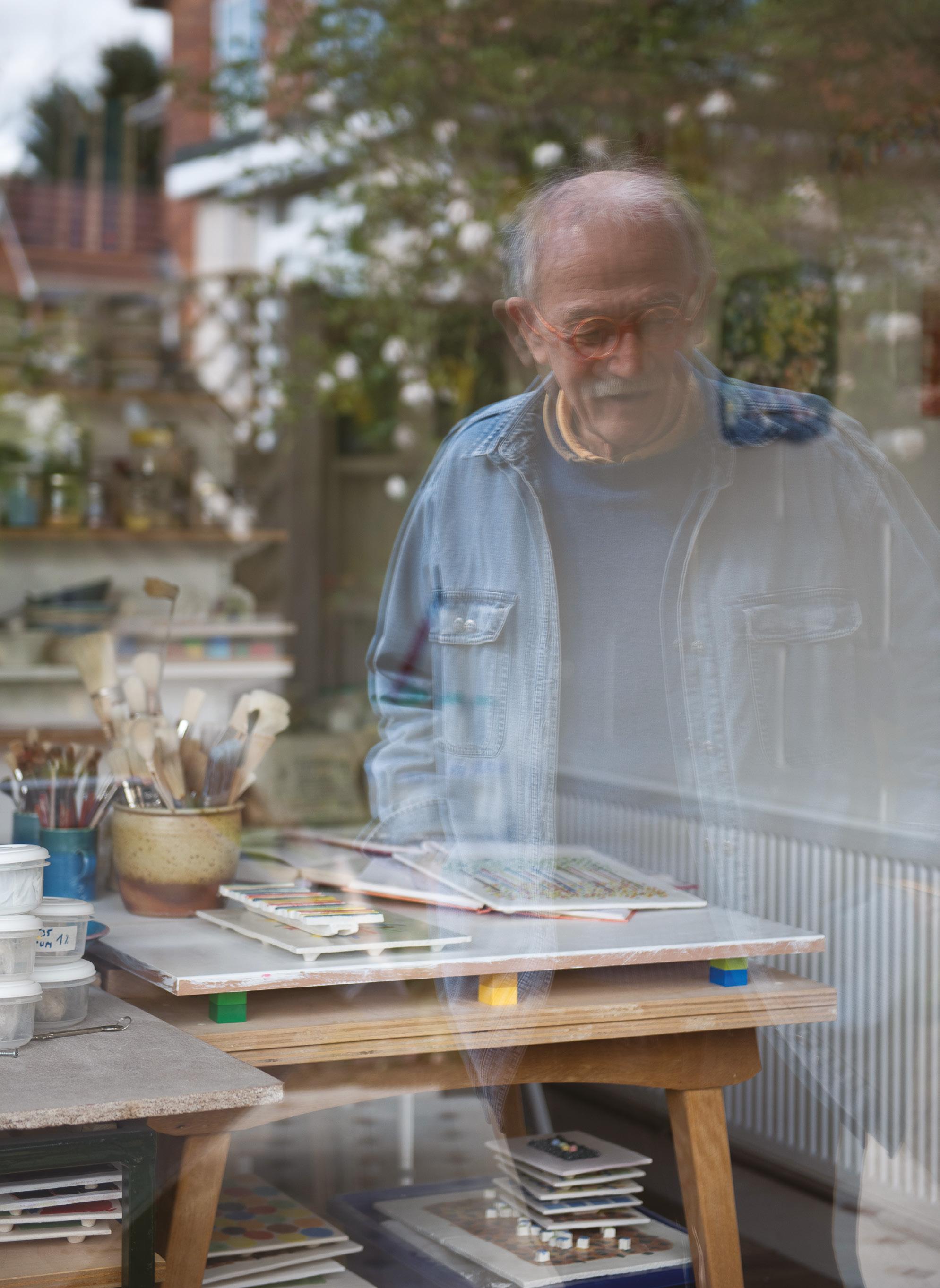

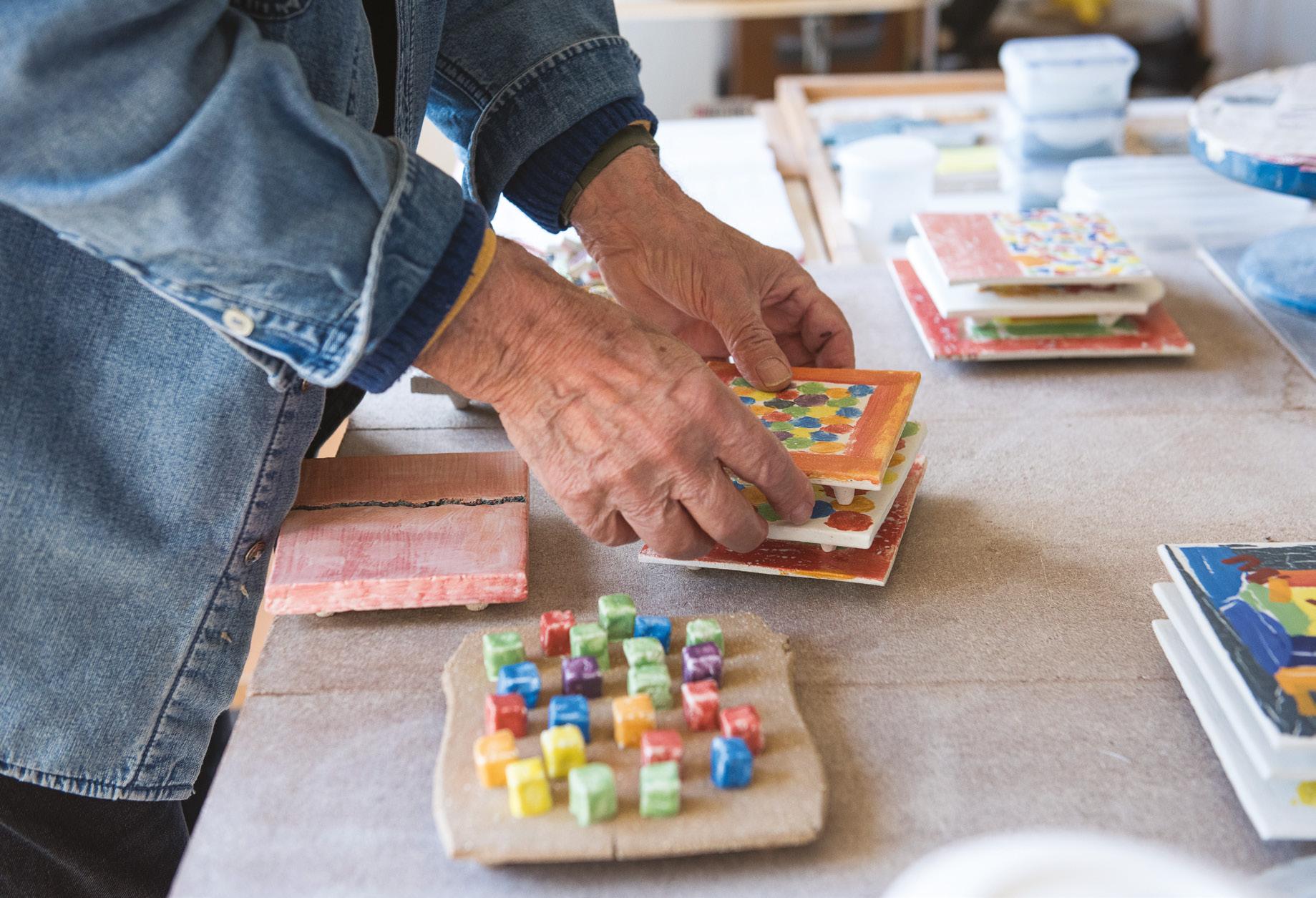
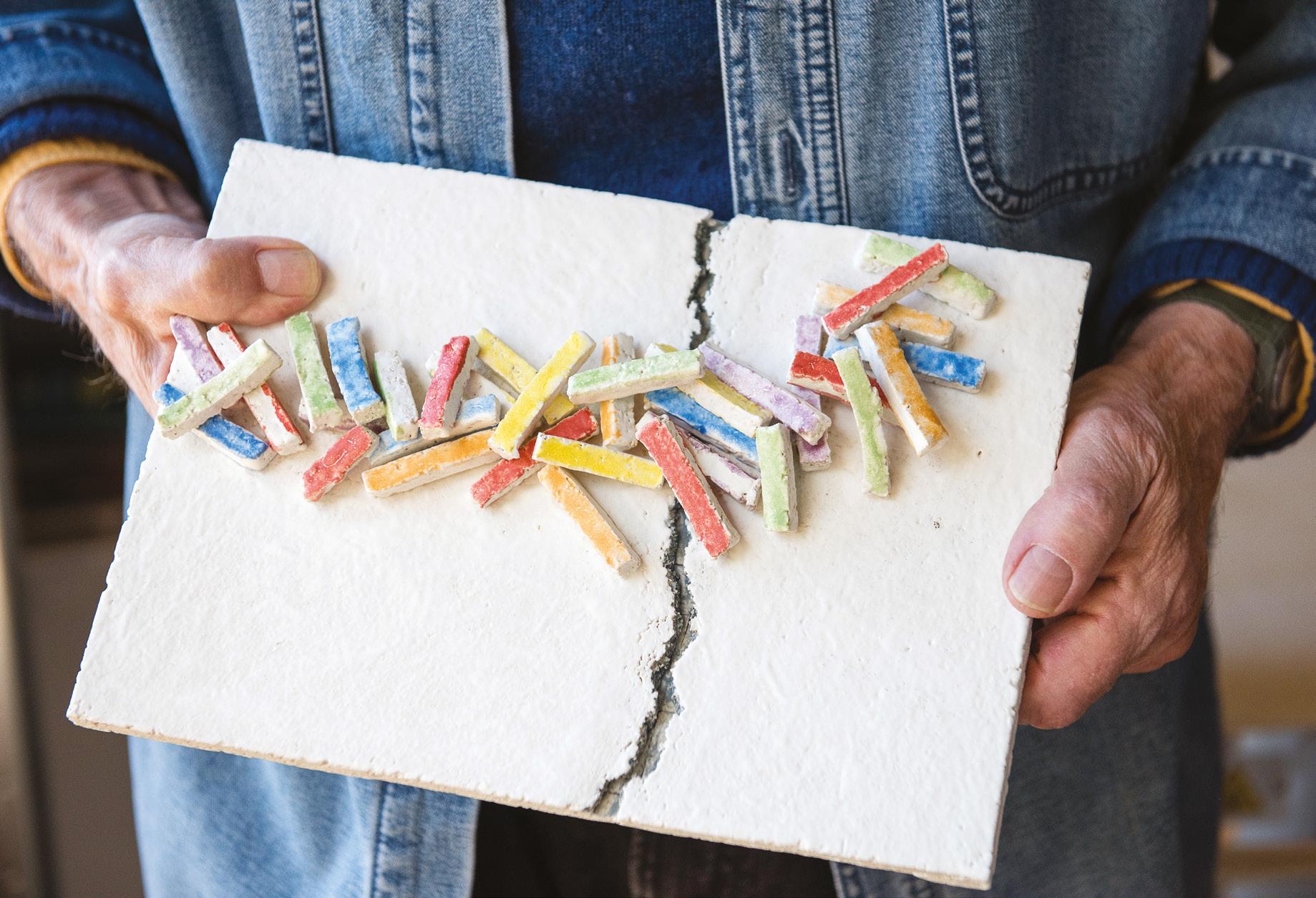
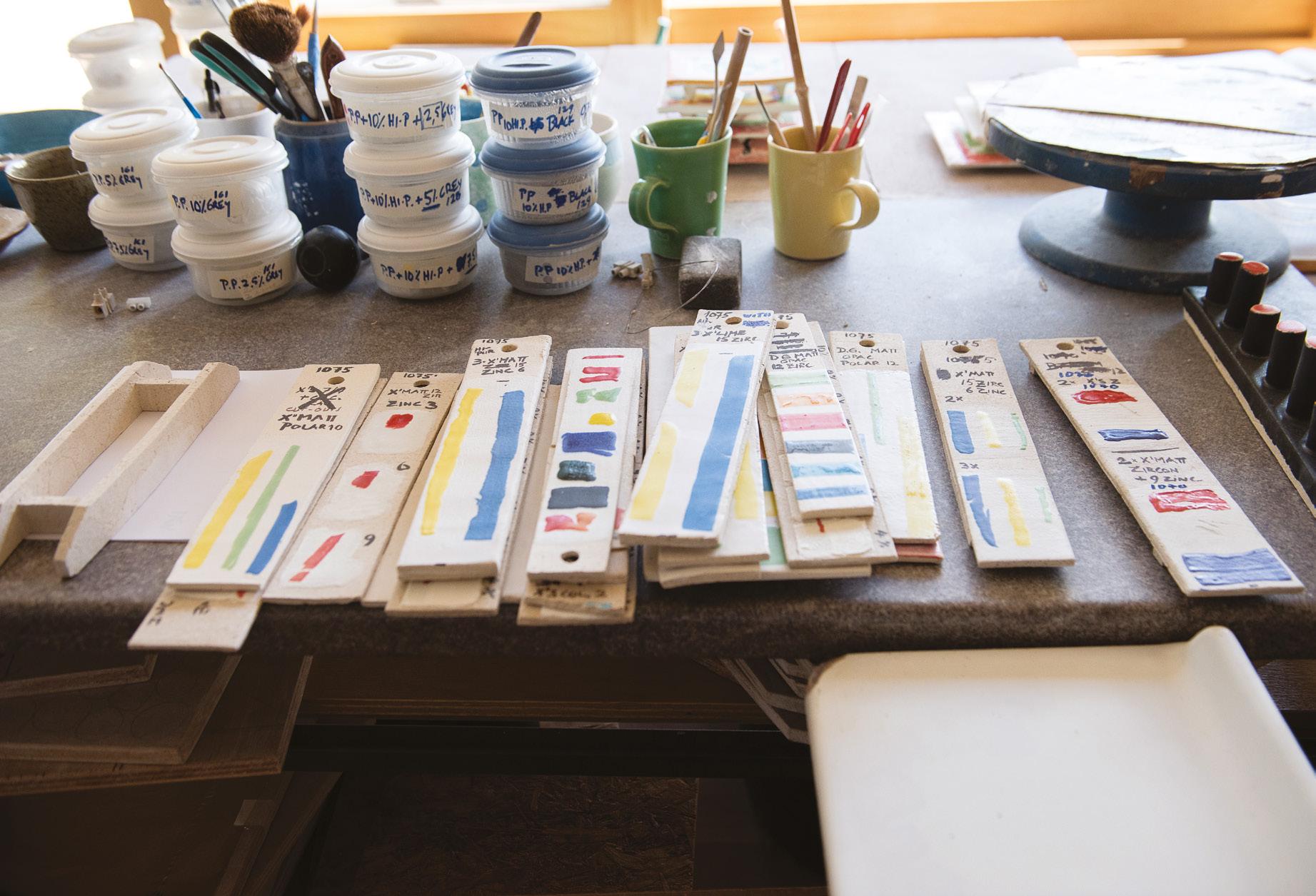
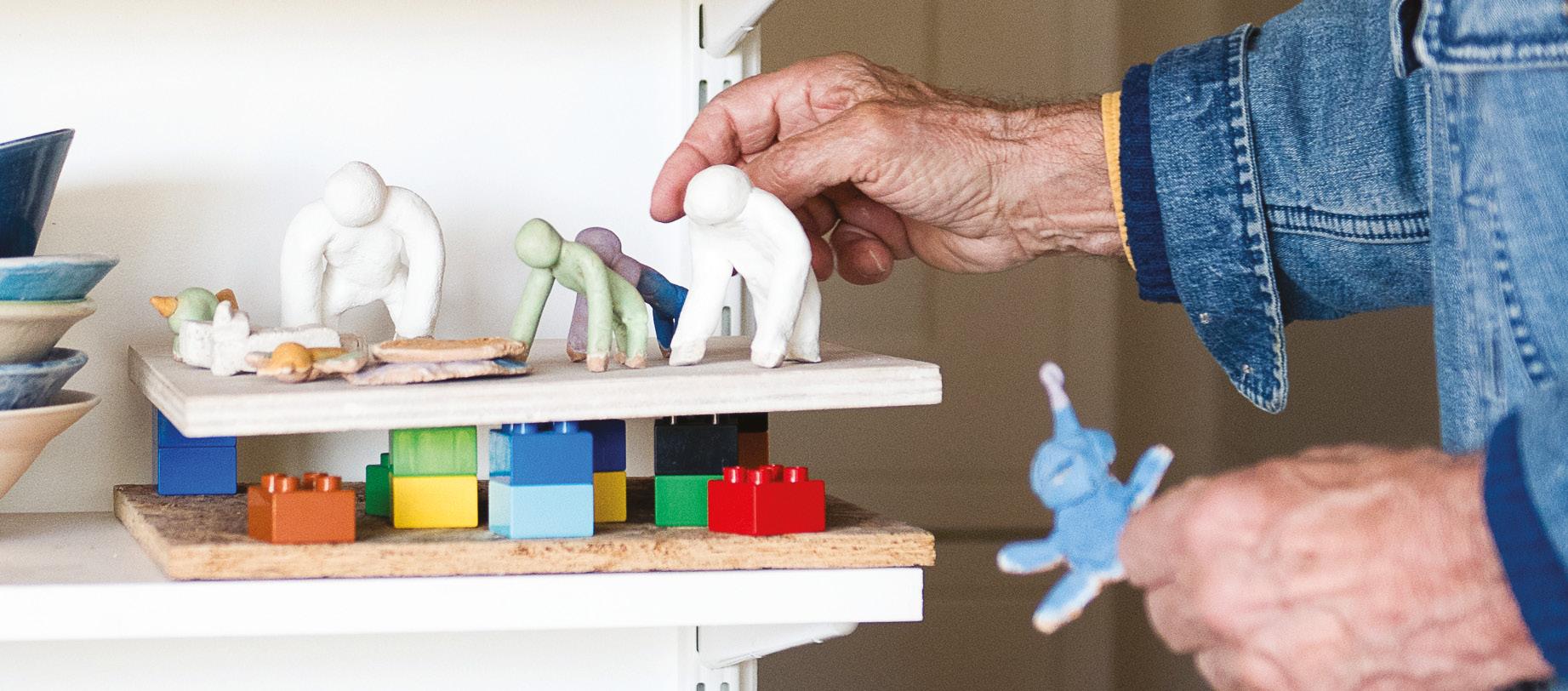
So how much of the process is down to luck and how much is intentional? ‘Colours are playing a big part,’ he explains, ‘I can control the colour itself, but I can’t control how the colour will shrink when it is fired.’ His interest lies in the combination of method and medium, ‘the challenge is the medium, and that is what I am interested in. For me, it is about exploring results from the risk and the work that I put in. Some items I like that I didn’t expect to like and vice versa.’
Norrie counts the painter Howard Hodgkin and mid-century architect Frank Lloyd Wright among his influences. Norrie’s use of colour is almost raw and experimental. ‘It’s like everything else; if you are long enough involved in something, you get a feeling for it,’ says Norrie ‘and it can depend on your cultural background – from being a child onwards, what you see around you, where you grow up etc. I am certain that influences you. If you go back to my childhood in 1946, Luxembourg was flattened, so what do you do? Luckily, we could rebuild, and it basically became a new country. For example, when they built the new roads, they put the telephone wires underground – why not in the ground, if you are building new roads? If you grow up with that [attitude] it’s easy to move forward.’
‘I don’t have many years left in me – I am pretty sure of that. So, I am excited that Jem Main and Dorset Visual Arts has come to The Glove Factory.’ In another coup for Sherborne and its credentials as a centre for the arts, Dorset Visual Arts – the parent company behind Dorset Art Weeks – has set up shop at The Glove Factory on Newland in anticipation of moving to Sherborne House in late 2023, under the remit of the new Cannon Foundation. It is still at planning stage but as DVA Creative Director Jem Main says, ‘DVA has been identified as the preferred organisation to run the arts at Sherborne House. We are very excited that there will be a dedicated gallery space on the first floor as well as a larger open area on the ground floor, which can be used at times for visual arts events such as talks and screenings.’
Norrie is a long-time and much-loved exhibitor with Dorset Art Weeks. ‘What he does is remarkable,’ enthuses Jem ‘the fact that he uses a sketchbook and translates his work into a batch of ceramics is very pictorial.’ As Norrie says, ‘everything is about how I can achieve colour and texture… it is all experiment.’
So as we welcome back Dorset Art Weeks we also warmly welcome Norrie, Jane and the team at Dorset Visual Arts to Sherborne. Our town becomes more colourful by the day.
dorsetartweeks.co.uk dorsetvisualarts.org
___________________________________________ Saturday 22nd May - Sunday 6th June Dorset Art Weeks 2021 The return of one of the largest open studio events in the country. Artists, designers and makers will be inviting visitors to explore their work, process and unique creative spaces at venues across Dorset. Download the digital app for up-to-date venue information and details of how this year’s event will be more flexible and safe for both artists and visitors. Look out too for a special edition Evolver magazine featuring all artists taking part this year in whatever format! dorsetartweeks.co.uk








